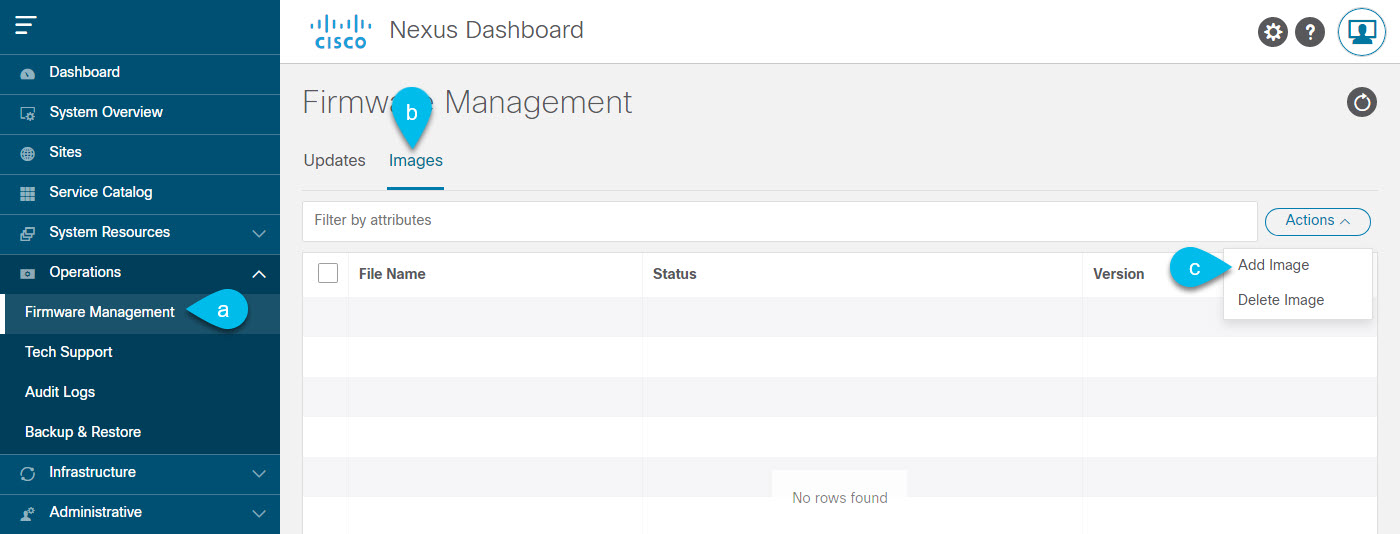Prerequisites and Guidelines
Before you upgrade your existing Nexus Dashboard cluster:
-
Ensure that you have read the target release's Release Notes for any changes in behavior, guidelines, and issues that may affect your upgrade.
-
You must be running Cisco Nexus Dashboard, Release 2.0.1 or later.
If you are running Cisco Application Services Engine, follow the steps described in Upgrading From Application Services Engine instead.
-
The upgrade process is the same for all Nexus Dashboard form factors.
Regardless of whether you deployed your cluster using physical servers, VMware ESX OVA, or in Azure or AWS cloud, you will use the target release's ISO image to upgrade.
-
Ensure that your current Nexus Dashboard cluster is healthy.
You can check the system status on the System Overview page of the Nexus Dashboard GUI or by logging in to one of the nodes as
rescue-userand executing theacs healthcommand -
You must disable any application installed in your cluster before the upgrade and re-enable them after the upgrade completes successfully.
Before you re-enable the applications, you must configure the App Infra Services deployment profiles as described in the "App Infra Services" section of the Cisco Nexus Dashboard User Guide.
-
After upgrading to Release 2.0.2, we recommend upgrading all the applications to their latest versions.
-
Downgrading from Release 2.0.2 is not supported.


 Feedback
Feedback